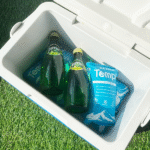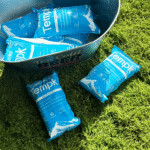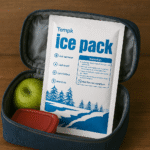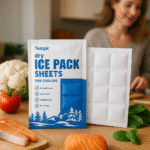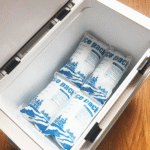Kosten für Trockeneis-Eisbeutel: 2025 Preise, Regeln & ROI
Das Recht wählen Kosten für Trockeneis-Eisbeutel In 2025 senkt direkt Ihre Gesamteinstandskosten und schützt gleichzeitig die Produktqualität. Sie sehen echte Preise pro Pfund, typische Zuschläge, und richtige Größenregeln, die Sie noch heute kopieren können. Im Klartext, Wir zeigen die Mathematik, Wann sollte man auf Gelpacks umsteigen?, und wie man Sendungen für den Luft- und Landweg richtig etikettiert. Sie erhalten außerdem einen Minirechner und eine kurze Checkliste, die Sie bei Ihrer nächsten Lieferung anwenden können.
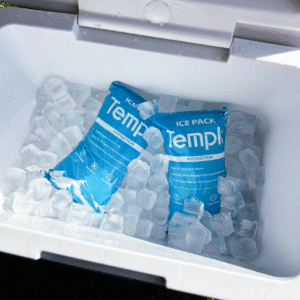
-
So dimensionieren Sie a Kosten für Trockeneis-Eisbeutel für 24- bis 120-Stunden-Fahrspuren ohne Mehrausgaben
-
Welche 2025 Zuschläge und Regeln sind für Sie am wichtigsten Kosten für Trockeneis-Eisbeutel
-
Wenn PCMs a schlagen Kosten für Trockeneis-Eisbeutel für 0–8 °C „nicht einfrierende“ Fracht
-
So kombinieren Sie Datenlogger und Isolierungsmöglichkeiten, um die Gesamtkosten zu senken
Was treibt die Kosten für Trockeneis-Eisbeutel an? 2025?
Direkte Antwort: Preis pro Pfund, Trockeneisgebühren des Spediteurs, Isolierung R -Wert, Umgebungswärme, und Ausfallrisiko sind die großen Hebel. Trockeneis im Einzelhandel landet häufig dazwischen $1.60 Und $3.00 pro lb, und viele Flugdienste fügen etwa eine hinzu $8 Trockeneisgebühr pro Paket. Planen Sie ca 5–10 Pfund pro Tag Sublimationsbereich und verbessern Sie die Isolierung dort, wo es günstiger ist als der Versand von zusätzlichem Gewicht. Diese Zahlen fassen aktuelle Felddaten und Trägerleitlinien zusammen.
cost_dry_ice_ice_pack
Warum es dir wichtig ist: Stellen Sie sich Hitze wie Wasser vor, das in einen Eimer eindringt. Eine bessere Isolierung verringert die Leckage, Sie kaufen also weniger Eis für die gleiche Bahn. Wenn Sie Tiefkühlware für 2–3 Tage versenden, Beginnen Sie in der Nähe 5 lb/Tag bei dichten EPS-Versendern und 8–10 lb/Tag bei dünnen Wellpappen. Lieferantenstufen senken den Stückpreis, wenn Sie mehr kaufen; Arbeiten Sie mit einem Nachbarn zusammen, um eine 100-Pfund-Bestellung aufzugeben und den Preis pro Pfund zu senken.
Wie viel Trockeneis pro Tag für häufig gefrorene Fahrspuren??
Für mittelgroße Verlader, ein praktischer Bereich ist 5–10 lb per 24 Std.. Verwenden Sie das untere Ende für dichte EPS- oder VIP-Container, und das High-End für dünne Wände oder heiße Strecken. Zeichnen Sie einen Lauf pro Spur mit einem Datenlogger auf; Sie wissen, ob Sie Eis schneiden können oder einen Puffer für Hitzewellen benötigen.
| Spurlänge | Basis lb/Tag | Wann zu verwenden | Was es für Sie bedeutet |
|---|---|---|---|
| 24 H, EPS/VIP | 5 | Leichte Strecken, enge Passform | Geringere Masse, geringeres Frachtgewicht |
| 48–72 h, EPS | 6–7 | Die meisten Tiefkühlkost | Gewicht und Spielraum ausgleichen |
| 72–96 h, gewellt | 8–10 | Heiße Sommer, dünne Wände | Erwägen Sie eine bessere Isolierung gegenüber mehr Eis |
Praktische Tipps und Vorschläge
-
Heiße Spuren: Nutzlast vorab einfrieren und hinzufügen 20–30% Puffer.
-
Lange Gassen: Teilen Sie das Eis entlang der Wände und des Deckels auf, um Hotspots zu reduzieren.
-
Ultragefroren: Verwenden Sie Trockeneis für ≤ –50 ° C. Spezifikationen; PCMs allein werden es nicht aushalten.
-
Validierung: Führen Sie für jede Spur einen Datenlogger-Test durch Kosten für Trockeneis-Eisbeutel Größe.
Tatsächlicher Fall: Eine Bäckerei an der Westküste ersetzte Gele durch ein 6 Pfund kostet Trockeneis-Eisbeutel in einem EPS-Kühler für zwei Tage Luft und reduzieren Sie die Ansprüche um ca. 30 %, ohne dass der Grundpreis erhöht wird.
Wie dimensioniert man einen kostengünstigen Trockeneis-Eisbeutel, ohne zu viel auszugeben??
Kurze Antwort: Verwenden Sie einen wiederholbaren Schätzer und validieren Sie ihn mit einem zeitgesteuerten Versuch. Eine beliebte Abkürzung für gefrorene Fahrspuren ist Nutzlastgewicht × 0.6 × Transittage. Überprüfen Sie dies mit dem 5–10 lb/Tag heuristisch und anpassen +20–30% für Hitzewellen oder dünne Wellpappe.
Ausgearbeitete Beispiele für eine schnelle Budgetierung
Beispiel A (2‑Tagesluft, EPS): 6 Pfund × $1.80 = $10.80 Eis + ~$8 Trockeneisgebühr + $3 Materialien ≈ $21.80–23,80 $.
Beispiel B (4‑Tagesgelände, gewellt): 18 Pfund × $1.60 = $28.80 Eis + $0–8 $ Gebühr + $3.50 Materialien ≈ $32.30–40,30 $.
Beispiel C (3‑Tagesluft, heiße Route): 29 Pfund × $2.20 = $63.80 + ~$8 Gebühr + $3.50 ≈ $75.30; Die Aufrüstung der Isolierung ist wahrscheinlich günstiger.
Trockeneis vs. Gelpackungen: Wann ist ein kostengünstiger Trockeneis-Eisbeutel die bessere Wahl??
Faustregel: Wählen Sie Trockeneis für ≤ - 18 ° C. Ziele oder längere Bahnen; Wählen Sie PCMs/Gel für 0–8 ° C „Nicht einfrieren“-Produkte. Trockeneis ist ein Einwegprodukt, aber leistungsstark; Gele sind wiederverwendbar und es fallen keine Gefahrgutgebühren an. Hybrid-Packouts Verwenden Sie eine kleine Kosten für Trockeneis-Eisbeutel plus PCMs für die Umstellung von gefroren auf gekühlt über 3–5 Tage.
| Kühlmethode | Typische Stückkosten | Wiederverwendung | Regulierungsaufwand | Beste Passform |
|---|---|---|---|---|
| Trockeneis | $1.60– 3,00 $ pro Pfund | Einzelnutzung | Klasse 9 Etikett, Entlüftung, UN1845 | Bewahren Sie Produkte bei ≤ −18 °C auf |
| PCM/Gel | $2– 5 $ pro Packung | Wiederverwendbar | Für die meisten Fahrspuren gibt es kein Gefahrgut | Halten Sie die Temperatur bei 0–8 °C oder ergänzen Sie Trockeneis |
Kennzeichnung und Sicherheit für jeden Preis von Trockeneis-Eisbeuteln
Tun Sie dies jedes Mal: Lufttransporte müssen entlüftet und mit „Kohlendioxid“ gekennzeichnet sein, solide,” mit UN1845 und Netto-kg, plus eine Klasse 9 Etikett. Verlassen 10–15 % Kopfraum. CO₂ dehnt sich aus ~541 L pro Kilogramm; niemals hermetisch verschließen. Eine einseitige SOP mit Fotos verhindert Umetikettierungsgebühren und Verzögerungen.
-
Markieren Trockeneis / Kohlendioxid, solide.
-
Hinzufügen UN1845 Und Nettogewicht in kg (Z.B., 6.0 kg).
-
Anwenden Klasse 9 Etikett auf einer vertikalen Seite.
-
Verwenden entlüftet Verpackung; Lüftungsschlitze niemals mit Klebeband abkleben.
Schneller Selbstbeschachung
-
Wir haben mindestens eine Spur mit einem Datenlogger validiert.
-
Auf jedem Luftkarton haben wir UN1845 und Netto-kg dokumentiert.
-
Wir gehen 10–15% Kopfraum in jeder Box.
-
Wir haben eine PCM-Alternative zu a Kosten für Trockeneis-Eisbeutel für 0–8°C-Spuren.
-
Wir verhandeln vierteljährlich die Trockeneisstufen neu.
2025 Trends, die Ihre Kosten für Trockeneis-Eisbeutel verändern
Was ist neu: Erwarten Sie stabile Preise pro Pfund mit regionalen Schwankungen, geringfügige Erhöhung der Carrier-Gebühren, und bessere Isolations-/Überwachungstechnik. Tragbare Trockeneisgeneratoren und leichtere VIP-Auskleidungen senken die Transportkosten. Halten Sie beide a Kosten für Trockeneis-Eisbeutel und ein PCM-Paket validiert ermöglicht den Wechsel, wenn sich das Wetter oder der Preis ändert.
Aktuelle Updates auf einen Blick
-
Trägergebühren: Viele US-amerikanische. Bei Flugdiensten fallen etwa Gebühren für die Bearbeitung von Trockeneis an $8 pro Paket.
-
Liefern: Die CO₂-Verfügbarkeit kann sich lokal verschärfen; halten zwei Lieferanten.
-
Technik: Günstigere Cloud-Datenlogger machen vierteljährliche Spurvalidierung einfach.
-
Materialien: Neu VIP-Liner Reduzieren Sie die Eismasse, ohne die Haltezeit zu beeinträchtigen.
Market insight: Modell zwei Packouts pro Spur und verhandeln jährlich Zuschlagsbedingungen. Wenn die Energiekosten steigen oder Hitzewellen auftreten, Der Wechsel zu einer Verpackung mit höherem R-Wert ist oft besser als der Versand weiterer 5–10 Pfund pro Tag Kosten für Trockeneis-Eisbeutel.
FAQ
Was kostet ein Trockeneis-Eisbeutel??
Es bedeutet die Eismasse, Trägergebühr, Materialien, Arbeit, und erwartete Risikokosten – verwenden Sie alle fünf, um Optionen zu vergleichen.
Ist Trockeneis gefährlich??
Ja. Es ist im Luftverkehr geregelt; Verpackungen müssen entlüftet und gekennzeichnet sein. Schulung des Personals und Messung des CO₂ in Bereitstellungsbereichen.
Wie viel Kopfraum brauche ich??
Zielen nach 10–15% Geben Sie Volumen frei und halten Sie die Lüftungsschlitze offen; CO₂ dehnt sich schnell aus, wenn das Eis sublimiert.
Kann ich Trockeneis ohne Gefahrgutpapiere auf dem Landweg versenden??
Mit ungefährlichen Gütern, Normalerweise benötigen Sie geeignete Etiketten und Belüftung, keine vollständige Gefahrstoffdeklaration. Bestätigen Sie Ihren Anbieterführer.
Wie viel Pfund pro Tag sollte ich einplanen??
Beginnen Sie mit 5–10 lb per 24 Std. und mit einem Logger auf Ihren eigenen Spuren validieren.
Zusammenfassung und Empfehlungen
Schlüsselpunkte: Dein Kosten für Trockeneis-Eisbeutel wird durch den Preis pro Pfund bestimmt, Trägergebühren, Isolierung, Umgebungswärme, und Risiko. Richtige Größe mit einfacher Mathematik, richtig beschriften, Kopfraum lassen, und behalten Sie eine PCM-Option für gekühlte Bahnen bei. Führen Sie die Validierung mit einem Datenlogger durch und überprüfen Sie die Ebenen einmal pro Quartal mit den Lieferanten.
Nächste Schritte: Führen Sie den Schätzer für Ihre fünf besten Fahrspuren aus, Dann A/B-Test der Isolierung im Vergleich zur Eismasse. Aktualisieren Sie Ihre Etikettierungs-SOP und planen Sie eine vierteljährliche Spurvalidierung. CTA: Kontaktieren Sie Tempk für ein Lane-by-Lane-Packout- und Kostenmodell.
Über Tempk
Wir entwickeln validierte Trockeneis- und PCM-Verpackungen, Isolierte Versender, und Kennzeichnung von SOPs. Wir helfen Essen, Pharma, und Biotech-Teams reduzierten die Ansprüche 20–40% und die Gesamtkosten um reduzieren 10–25% durch die richtige Kühlmitteldimensionierung und Verbesserung der Isolierung.

















